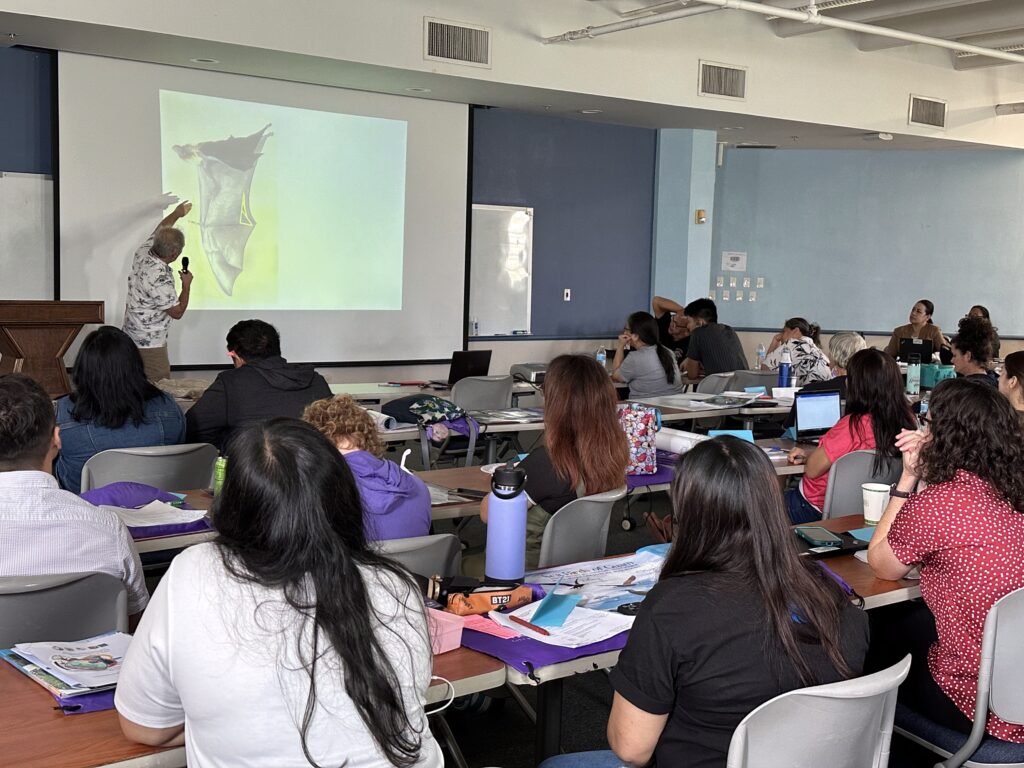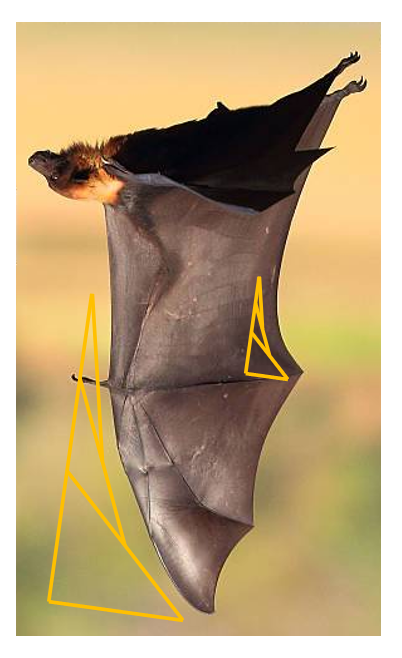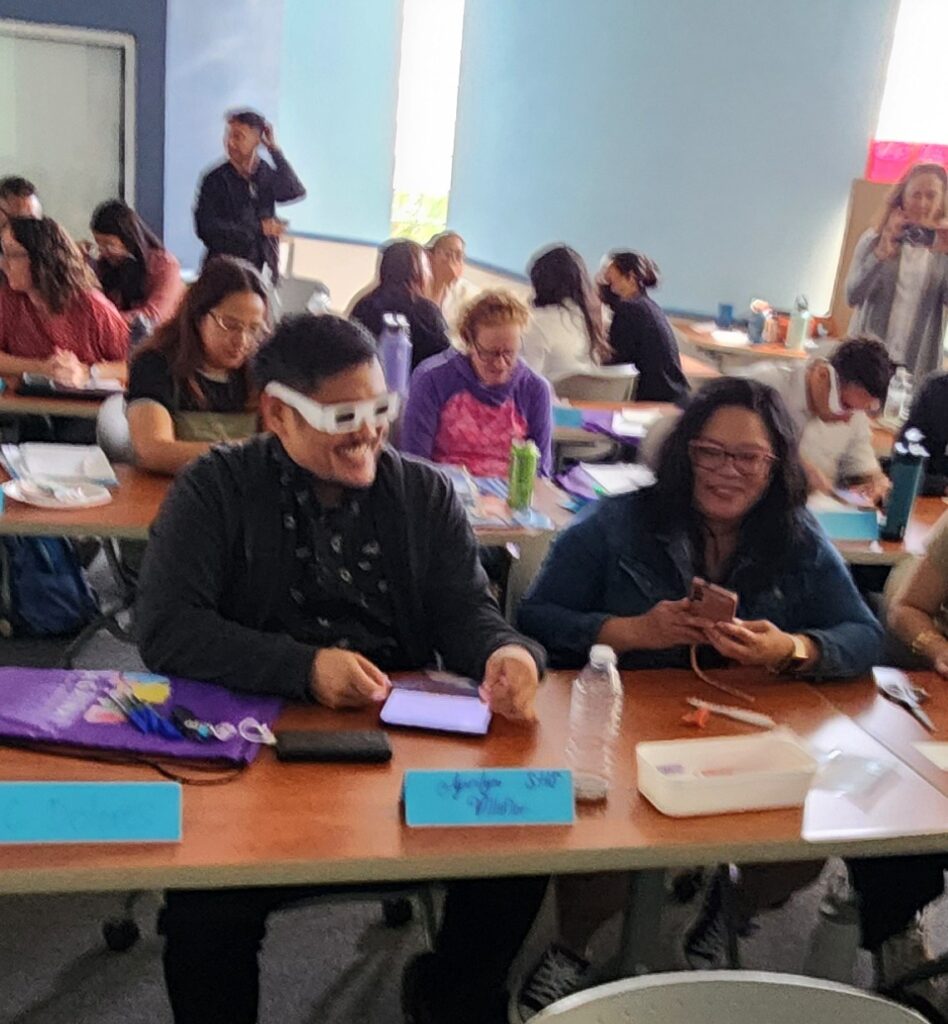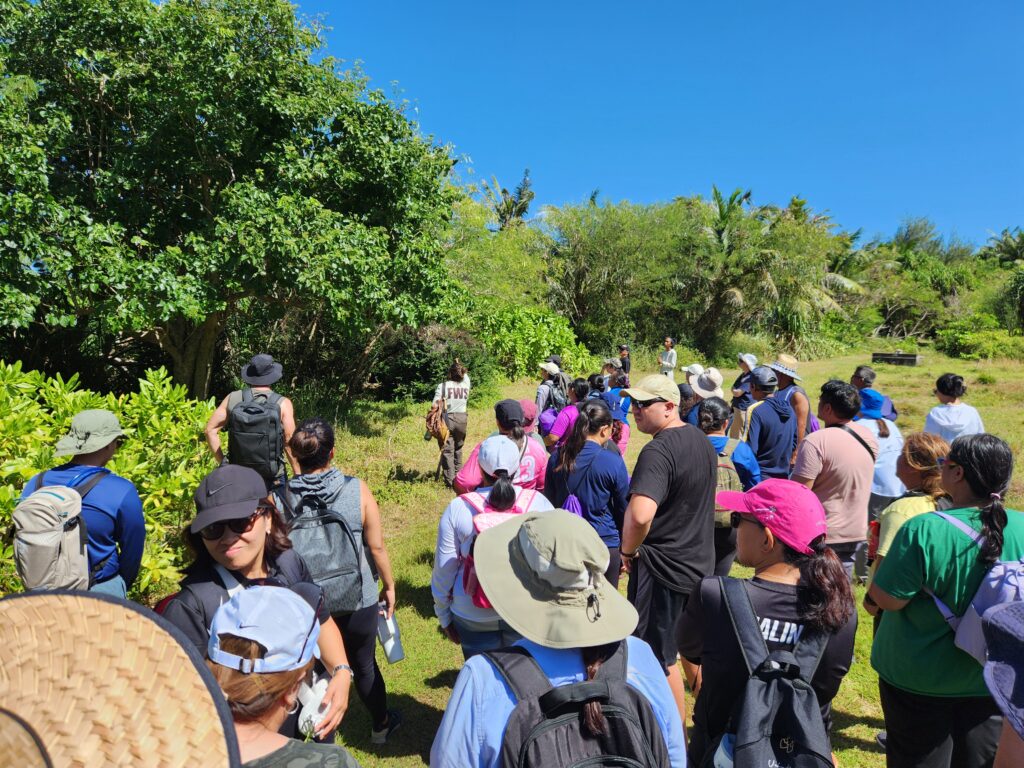
Director Stier showing curvature of bat wing of threatened bat species. The shape is highly effective at reducing mechanical stress and the formation of tears.
The Center for Learning With Nature hosted 70 K-12 teachers from 25 different schools across the island of Guam for the 3rd annual workshop on integrating the natural world into teaching standard school subjects (Nature-Enriched School Teaching). The first day of the workshop was held at the University of Guam, with welcoming remarks given by Dr. K. Erik Swanson, the Superintendent of Education for Guam; the Honorable Joshua F. Tenorio, Lieutenant Governor of Guam; and Joseph Sanchez, Deputy Superintendent of the Guam Department of Education. The 2nd day of the workshop was held outdoors at the Guam National Wildlife Refuge.
During the workshop, teachers learned how to teach a hands-on lesson that explores the wing shape of the threatened Mariana fruit bat endemic to Guam using the photoelastic effect, in order to discover structural engineering principles for making human-made structures stronger and safer while using less material. The lesson is adaptable to any grade and aligned with the engineering standards of the NGSS.
Evaluations of the workshop were extremely positive. Over 93% of the participants reported the workshop did an excellent job meeting the teachers’ needs.
The Center for Learning With Nature has now reached 145 teachers in the last three years of education and outreach activities on the island. These teachers in turn collectively reach about 21,000 school students each year, or about half of the school-aged population on Guam.
The project is a collaboration between The Center for Learning With Nature, University of Guam, US Fish and Wildlife Service, and Department of Defense.

Specific curves on the wings of the Mariana Fruit Bat are excellent at preventing a build-up of mechanical stress

Teachers use the photoelastic effect with cell phones and polarized sunglasses to model and compare the toughness of different structures

Teachers in the field at the Guam National Wildlife Refuge, learning strategies for integrating Nature, culture, and place-based education into formal education




